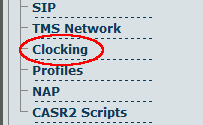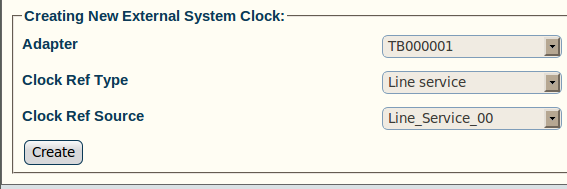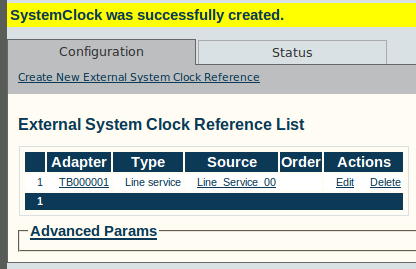Toolpack:Defining a Clocking Source A
From TBwiki
(Difference between revisions)
m (moved Toolpack v2.5:Defining a Clocking Source to Toolpack:Defining a Clocking Source A: New naming convention) |
|||
| Line 1: | Line 1: | ||
=== '''''Applies to version(s): v2.5, v2.6.''''' === | === '''''Applies to version(s): v2.5, v2.6.''''' === | ||
| − | {{DISPLAYTITLE: | + | {{DISPLAYTITLE:Defining a Clocking Source}} |
The clock is a necessary component of a TDM network. Synchronizing your system on the right clock, allows it to offer good sound quality. | The clock is a necessary component of a TDM network. Synchronizing your system on the right clock, allows it to offer good sound quality. | ||
It is now recommended that you configure an external [[High Availability:Hardware:Clocking|clocking]] source for your system. | It is now recommended that you configure an external [[High Availability:Hardware:Clocking|clocking]] source for your system. | ||
Latest revision as of 13:26, 9 July 2012
Applies to version(s): v2.5, v2.6.
The clock is a necessary component of a TDM network. Synchronizing your system on the right clock, allows it to offer good sound quality. It is now recommended that you configure an external clocking source for your system.
To do so:
1- Click Clocking in the navigation panel
2- Click Create New External System Clock Reference
3- Create the new clocking source:
- Select the appropriate hardware adapter
- Select a clock reference type (in this example, Line Service was chosen)
- Select a clock reference source (in this example "Line_Service_00")
Note: In this example, Line Service was chosen as the reference type, and the line service created in step B was chosen as the clocking source.
4- Verify that the SystemClock was successfully created message appears, and that the new clocking source appears in the External System Clock Reference List



